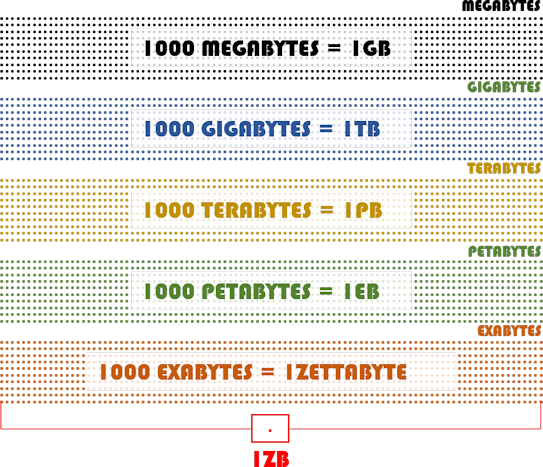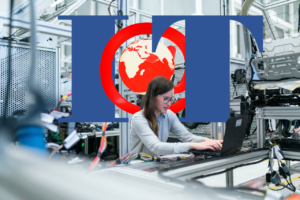Disruption is normally anathema in the supply chain. Formally defined as a disturbance or problem that interrupts an event, activity, or process, disruption means a supply chain that was once functioning smoothly is no longer doing so. When it comes to IoT implementation, however, disruption might not be a bad thing. In the long run, think of it in terms of an advertising slogan coined by Coca-Cola in 1929, “the pause that refreshes.” Dan Roberts, a Senior Consultant at Cambashi Limited, notes, “Research into the ‘industrial’ application of the Internet of Things finds unequivocally that IIoT is transforming supply chains.”[1] Unfortunately, the road to transformation is a bumpy one. Alec Sears (@alecarthursears) reports, “The Internet of Things is exploding. Analysts expect there to be more than 50 billion devices connected to the internet by 2020, and these devices generate enormous amounts of data that businesses can leverage. However, the stats so far aren’t looking good — almost 75% of business IoT projects are failing.”[2]
Why the Internet of Things is Important
The fact so many IoT projects are failing — and knowing the IoT still faces numerous challenges — begs the question why are so many pundits insisting companies need to jump on the IoT bandwagon? Roberts points out three good reasons traversing the bumpy road to IoT implementation are worth the effort. They are:
More efficient operations. “In retail, Industrial IoT is helping deliver every supply chain manager’s dream of visibility.” To demonstrate how IoT connectivity provides visibility and promotes more efficient operations, watch the following video produced by IBM.
Although the example used in the video is automotive-related, the concepts described can be applied to any number of economic sectors. The automotive example demonstrates how the customer, dealer, and manufacturer benefit from better connectivity — which is a good segue to the next benefit suggested by Roberts.
Improved customer experience and satisfaction. Most IoT discussions focus on the benefits connectivity provides businesses (e.g., better visibility, improved maintenance, asset tracking, etc.); however, the IoT benefits customers as well. Barb Darrow (@gigabarb) writes, “The coolest things about the Internet of things are not the things themselves (though those are undeniably awesome) but the services they enable.”[3] The services to which she refers mostly result in cost savings for individual, corporate, or government customers. Darrow concludes, “[Those services] can pay off at the one-off residential level, but the real opportunity comes in institutional settings.” When a fully-mature IoT is in place, customer savings are annually predicted to be in the trillions of dollars.
New revenue opportunities. The IBM video shows how IoT connectivity can improve service and repair opportunities. Roberts provides another example: Rolls-Royce. “Rolls-Royce is using Industrial IoT to change its role within the supply chain. The company’s TotalCare services provide a ‘power by the hour’ model, where customers pay based on engine flying hours. The responsibility for engine reliability and maintenance rests with Rolls-Royce, which analyzes engine data to manage engine maintenance and maximize aircraft availability. So, instead of being a parts supplier to the engine manufacturer, it becomes a service supplier to the airline.” This business model is part of what is known as the circular economy — “a regenerative system in which resource input and waste, emission, and energy leakage are minimized by slowing, closing, and narrowing energy and material loops.”[4] As IoT implementation become more ubiquitous and mature, use cases will increase dramatically. Nicolas Windpassinger, Global Vice President of Schneider Electric’s EcoXpert™ Partner Program, predicts, “The future of the Internet of Things on various levels is an integrated one. Especially, the mix of IoT, blockchain and cognitive computing will lead to myriad new outcomes.”[5]
Windpassinger isn’t the only expert who sees the combination of IoT and cognitive computing changing the business landscape. Analysts from CXO Today write, “Research have pointed out the increasingly symbiotic relationship between the Internet of Things and Cognitive computing — the artificial intelligence capabilities of the latter makes a perfect combination for the speed and size of the former. IoT provides the data quantities needed to optimize the value and Return on Investment (ROI) of Cognitive analytics solutions. Such studies are indicative of a trend which will establish the presence of IoT into the data world more strongly.”[6]
Overcoming IoT Implementation Challenges
Some IoT challenges, like protocols and standardization, require a globalized approach. Other challenges, like IoT security, can be confronted at the enterprise level. Before undertaking any IoT project, Sears recommends companies consider six preliminary steps. They are:
1. Planning Ahead to Avoid Common Mistakes. Sears writes, “According to the May 2017 Cisco Report, there are five primary challenges businesses face that can cause IoT projects to fail:
- Budget overruns
- Integration across teams
- Limited internal expertise
- Quality of data
- Time to completion
“Most of these issues simply come down to proper planning.”
2. Upping Your Security Game. Security remains one of the biggest concerns associated with IoT processes. Sears reports, “In a poll by 451 Research, [security] was the top concern and reason why 50% of respondents haven’t already implemented IoT into their businesses.”
3. Anticipating Your Data Storage Needs. Anyone following IoT discussions knows IoT networks are predicted to generate so much data the modifier “big” will be wholly inadequate to describe it. Sears notes, “IoT is all about the data. The collection of enormous amounts of data and the subsequent analysis and implementation of that data is what makes the Internet of Things so great for businesses. Just how much data are we talking? Around two zettabytes per year by 2019, according to analysts. A zettabyte is one thousand exabytes.” The following graphic may give you a clearer picture of how much data we are talking about.

4. Finding and Testing an Analytics Platform. CXO analysts call IoT and cognitive computing “a match made in heaven.” They add, “Cognitive computing addresses complex problems — problems which are ambiguous and uncertain. In today’s dynamic and information-rich world, data is of various types and forms. … Cognitive computing aids in keeping up with the pace [of business] by providing a synthesis of information, influence, context and insights.”
5. Starting With the Basics. Sears writes, “Rather than diving right in with complex IoT solutions to problems that may not exist for your business, get your feet wet by using IoT to solve a long-standing but relatively simple problem your company may have.” At Enterra Solutions®, we use a crawl, walk, run approach with clients that fosters experimentation and refinement before full-scale implementation.
6. Justifying Your Projects. I have always insisted a business case must be made for any change. Implementing IoT is no different. Sears writes, “While most companies can greatly benefit from IoT and big data, the time may not be right in your particular business, industry, or local market to make the investment. You don’t want to jump on the IoT bandwagon just because it seems like the smart thing to do. Make sure it is the smart thing to do for your business before starting your first IoT pilot project.”
I agree with Sears those six steps are a good way to start any IoT project. Roberts concludes, “By 2020, we expect that the plethora of Industrial IoT products and services will have consolidated and the pricing models will be simpler and well established. Customers will expect their suppliers to be tracking their products through sensors, as standard solutions replace special projects. Beyond 2020, we expect supply chains to be transformed by the digital projects of their participants. That means greater transparency and traceability, with improved customer experience and lower costs.”
Footnotes
[1] Dan Roberts, “How Industrial IoT is Disrupting Supply Chains,” SupplyChainBrain, 12 February 2018.
[2] Alec Sears, “How to Prepare Your Company for the Coming IoT Boom,” IoT for All, 12 March 2018.
[3] Barb Darrow, “This tech can cut your water bill, save energy, oh and stalk your cat,” Fortune, 2 October 2015.
[4] “Circular economy,” Wikipedia.
[5] Nicolas Windpassinger, “The future of IoT spells blockchain and AI – the reality of blockchain today mainly spells cryptocurrency and hype,” IoT Business News, 12 February 2018.
[6] Staff, “Cognitive Computing Will Redefine IoT Landscape,” CXO Today, 21 December 2017.





